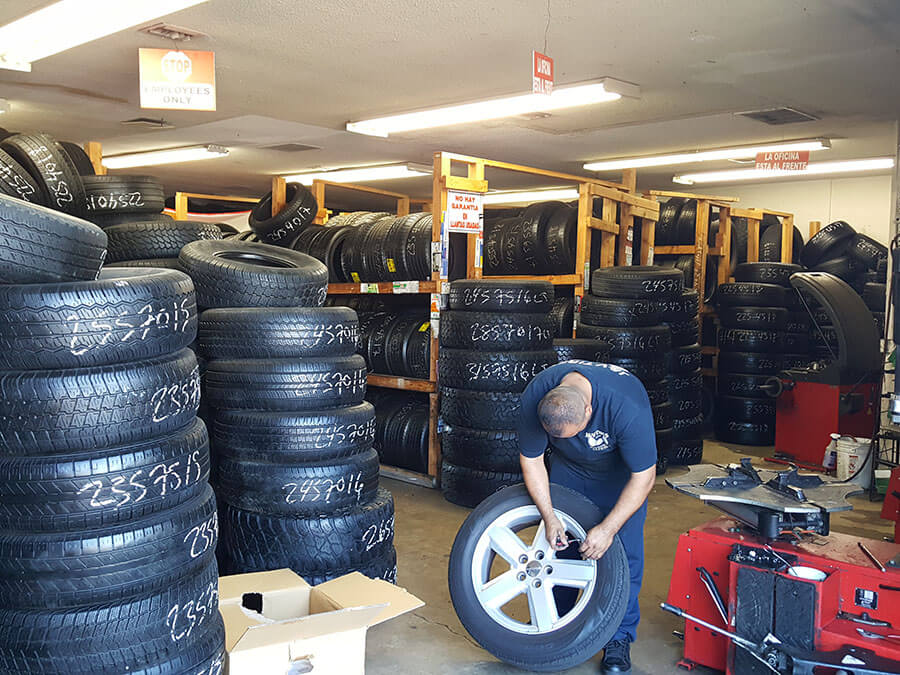Tire Service: Recognizing Tire Pressure Tracking Equipments
Comprehending Tire Stress Monitoring Solutions (TPMS) is a vital aspect of keeping ideal car efficiency and safety when driving. With advancements in automobile modern technology, TPMS has ended up being a typical feature in contemporary vehicles, offering real-time info on tire stress levels. Diving deeper right into the complexities of TPMS, one can reveal the various elements that compose this system and the significance of each in ensuring precise surveillance. From straight to indirect TPMS systems, the landscape of tire pressure monitoring varies, each with its unique set of factors to consider and advantages. Keep tuned to unwind the complexities of TPMS, from upkeep tips to the obvious benefits of maintaining your tires properly blew up. tires morris il.

Value of TPMS
The importance of Tire Pressure Tracking Equipments (TPMS) depends on their capacity to boost car safety and security and performance through real-time tracking of tire stress levels. Maintaining the correct tire stress is crucial for guaranteeing ideal handling, braking, and overall safety of a car. TPMS supplies motorists with immediate feedback on any underinflated or overinflated tires, permitting timely changes to be made.
Components of TPMS
Comprising numerous important components, a Tire Pressure Monitoring System (TPMS) operates as a sophisticated safety function in modern-day automobiles. The primary components of a TPMS include sensors, a control component, and a caution indicator. Sensors are normally situated in the tire valve stem or affixed to the wheel assembly, where they measure tire pressure and transmit data to the control module. The control module processes this information and sets off a warning if it detects considerably low pressure in any of the tires. The caution indicator, frequently a sign on the control panel, alerts the driver to inspect the damaged tire or tires. Some progressed TPMS designs additionally present the real tire stress readings for every tire, giving chauffeurs with real-time info to make certain optimal tire performance and security. By keeping track of tire stress continually, TPMS helps stop accidents, reduces tire wear, and improves fuel performance, making it a critical part for car safety and efficiency.
Sorts Of TPMS

On the other hand, indirect TPMS relies upon the car's wheel speed sensors to keep an eye on tire stress. This system identifies underinflation by contrasting the rotational rates of the wheels. Indirect TPMS is much see this here less pricey than straight TPMS, as it makes use of existing sensing units within the vehicle.
While direct TPMS offers much more precise analyses, indirect TPMS is less complex in design and commonly click requires much less upkeep. Both systems have their advantages and restrictions, and the selection between them commonly depends on variables such as cost, automobile make, and individual preference. Recognizing the distinctions in between these two types of TPMS can help vehicle proprietors make informed decisions relating to tire maintenance and security.
TPMS Maintenance Tips
Efficient maintenance of TPMS is vital for making sure optimum efficiency and safety and security of your vehicle. Consistently evaluating the TPMS sensors for any kind of damage or corrosion is important. Guarantee that the sensing units are clean and cost-free from particles that could conflict with their performance. In addition, it is advisable to inspect the sensing unit batteries occasionally and change them as needed to guarantee exact analyses. Conduct routine checks on the tire stress degrees and contrast them with the TPMS readings to ensure they are consistent. Recalibrate the system following the manufacturer's guidelines if there are any kind of disparities. Moreover, throughout tire rotation or substitute, see to it that the TPMS elements are handled meticulously to stop any possible damage. Last but not least, if the TPMS cautioning light brightens on the control panel, deal with the problem quickly by checking the tire stress and the general system for any mistakes. By adhering to these upkeep pointers, you can lengthen the lifespan of your TPMS and enhance the safety of your driving experience.
Benefits of Appropriate Tire Stress
Maintaining proper tire stress, as stressed in TPMS Maintenance Tips, is vital for gaining the numerous benefits connected with ideal tire pressure levels. Additionally, proper tire stress guarantees also tire wear, prolonging go to the website the lifespan of the tires and promoting more secure driving problems. In final thought, the benefits of proper tire stress go past just tire durability; they incorporate improved gas performance, boosted safety and security, far better car performance, and overall driving comfort.
Final Thought
In final thought, understanding tire pressure monitoring systems (TPMS) is critical for keeping ideal tire stress and ensuring lorry safety. By recognizing the relevance of TPMS, knowing with its elements, understanding the different types offered, sticking to correct upkeep tips, and recognizing the advantages of maintaining correct tire stress, chauffeurs can enhance their driving experience and lengthen the life expectancy of their tires. Proper tire pressure is key to effective and risk-free vehicle procedure.

Comments on “Quality Tire Shop Morris: Your Best Destination for Tire Needs”